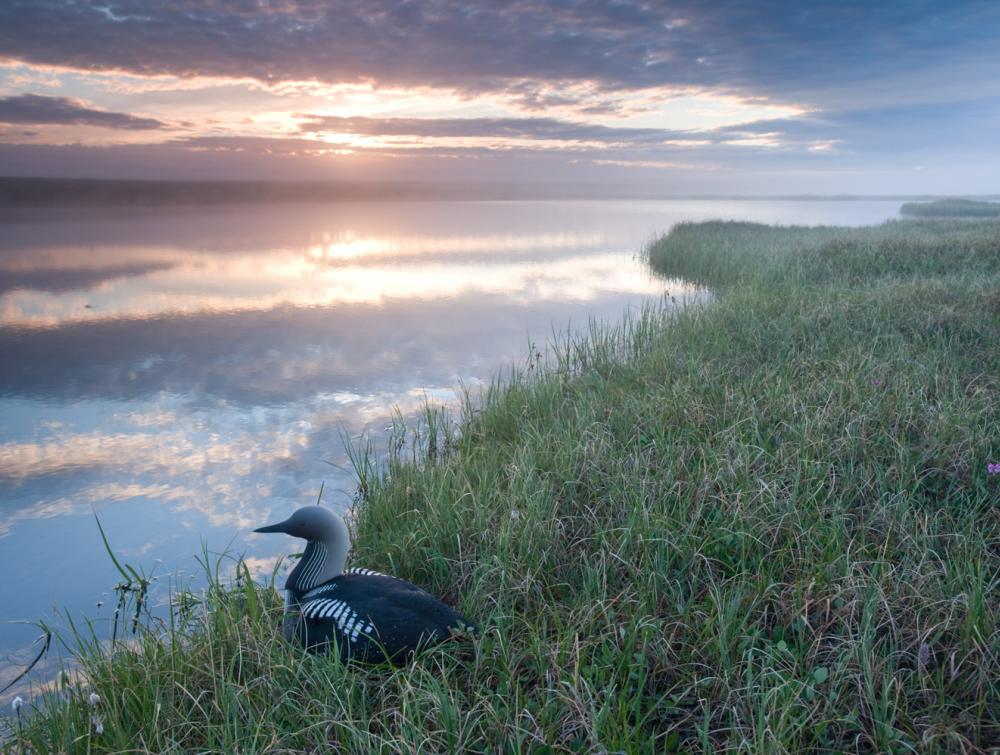Arctic animals at risk: Which animals are most threatened by oil development?

Peter Mather
Arctic animals face a new threat that could severely exacerbate habitat stresses caused by climate change: drilling for oil.
The animals and ecosystems at stake
Despite icy, bone-chilling climes, the Arctic Chukchi and Beaufort seas off the northern coasts of Alaska are teeming with life, both in the water and atop the floating ice above. From darting seals and diving walruses to ice-roaming polar bears and migrating whales, a bountiful but fragile web of life struggles to prevail as climate change inflicts rapid changes.
Little is known about oil spills in ice-filled waters, but we do know spilled oil tends to collect between and under breaks in the sea ice--and that Arctic animals spend a great amount of time submerged or resting at water’s edge near these ice breaks. For birds and marine mammals, the ice-free water is the passageway to rich hunting and fishing grounds below. Fish and aquatic animals are drawn there for the unique algae and tiny crustaceans that populate ice edge.
Which species would suffer from an oil spill in Arctic waters?
- Seals: Arctic seals include ringed, ribbon, spotted and bearded seals. Like any marine mammals, seals could be directly exposed to oil when surfacing. If a seal’s fur becomes oiled, its coat loses insulation, a dangerous situation for seal pups, whose lack of blubber makes them dependent on downy fur for warmth. Seal pups can become easy prey if matted oil interferes with flipper movement and their ability to swim. Like other animals, seals can suffer organ damage or death after ingesting oil directly or by eating contaminated fish.
- Polar bears: The Chukchi and Beaufort, also called the Polar Bear Seas, provide critical habitat and hunting grounds for America’s only polar population. These bears spend most of their lives roaming the sea ice in the hunt for seals and other prey. As with other fur-bearing animals, if a polar bear’s coat becomes oiled, it loses its insulating qualities. A heavily oiled bear may not be able to regulate its body temperature, putting it at risk for hypothermia. Bears can also be impacted if prey animals are contaminated by oil.
- Walruses: The Chukchi and Beaufort seas are home to 90 percent of the entire Pacific walrus population. These walruses spend most of their lives at sea foraging shallow waters for mollusks and other food. An oil spill could devastate critical feeding grounds for the walrus.
- Whales: Arctic waters host thousands of whales every year, including gray whales, bowheads, belugas and the endangered humpback and fin whales. In waters where oil exploration has taken place, whales have been known to alter age-old travel routes in response to the noise from seismic booms used to find oil. While whales are generally not victims of the oiling that harms furred and feathered animals, they could directly inhale and ingest oil or dispersant chemicals as they skim the water’s surface for food. Exposure to oil can interfere with a baleen whale’s ability to eat by fouling the baleen whales use to filter food, according to the National Oceanic and Atmospheric Administration.
- Birds: Millions of birds, such as the King Eider, the Kittlitz’s Murrelet and the Ivory Gull use the Chukchi and Beaufort seas. When birds come in direct contact with oil, their feathers lose insulation, subjecting the birds to death by hypothermia. As oiled feathers become matted or heavy, birds may drown or lose their ability to fly. Oiled birds also become sick or die after ingesting oil when cleaning themselves.
- The ecosystem: Arctic ecosystems are less likely to recover from spills than those in more temperate climates. Oil breaks down slower in cold weather, while shorter growth and reproduction seasons means that negative impacts persist longer. Alaska's Arctic waters also border and enter boundaries of the Arctic National Wildlife Refuge and other special areas of the Arctic slope. Because the refuge’s ecosystem is integrally tied to the coast, animals like the Arctic fox could also be impacted.
Oil cleanups in icy waters are a great unknown
The oil industry does not possess any proven technology for clean ups in icy waters, and the presence of sea ice complicates clean-ups in ways not known in more temperate waters. Treacherous Arctic weather would also make it difficult if not impossible for rescue and response workers to physically arrive to the site of an emergency.
Protecting the Arctic
Despite what oil companies say, oil spills are part of drilling. In the Chukchi alone, the government has predicted a 40 percent chance of a significant oil spill.
The facts show that there is not enough oil off of our shores to make the United States energy independent or to reduce gas prices. And while there’s nothing we can do to roll back the last oil spill, we can prevent a catastrophic spill from happening in the Arctic by not letting the risky business of drilling go forward in these fragile waters.
